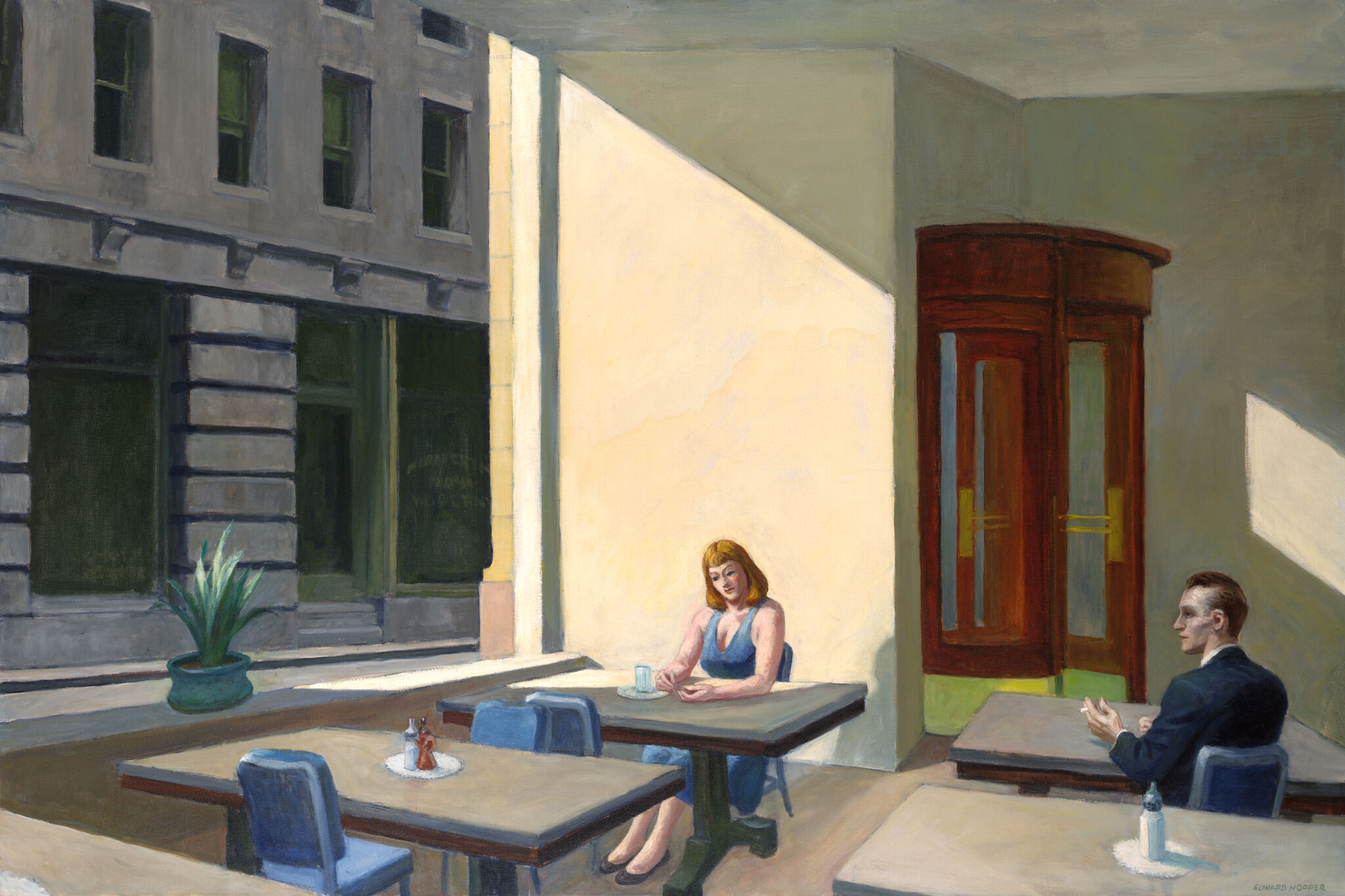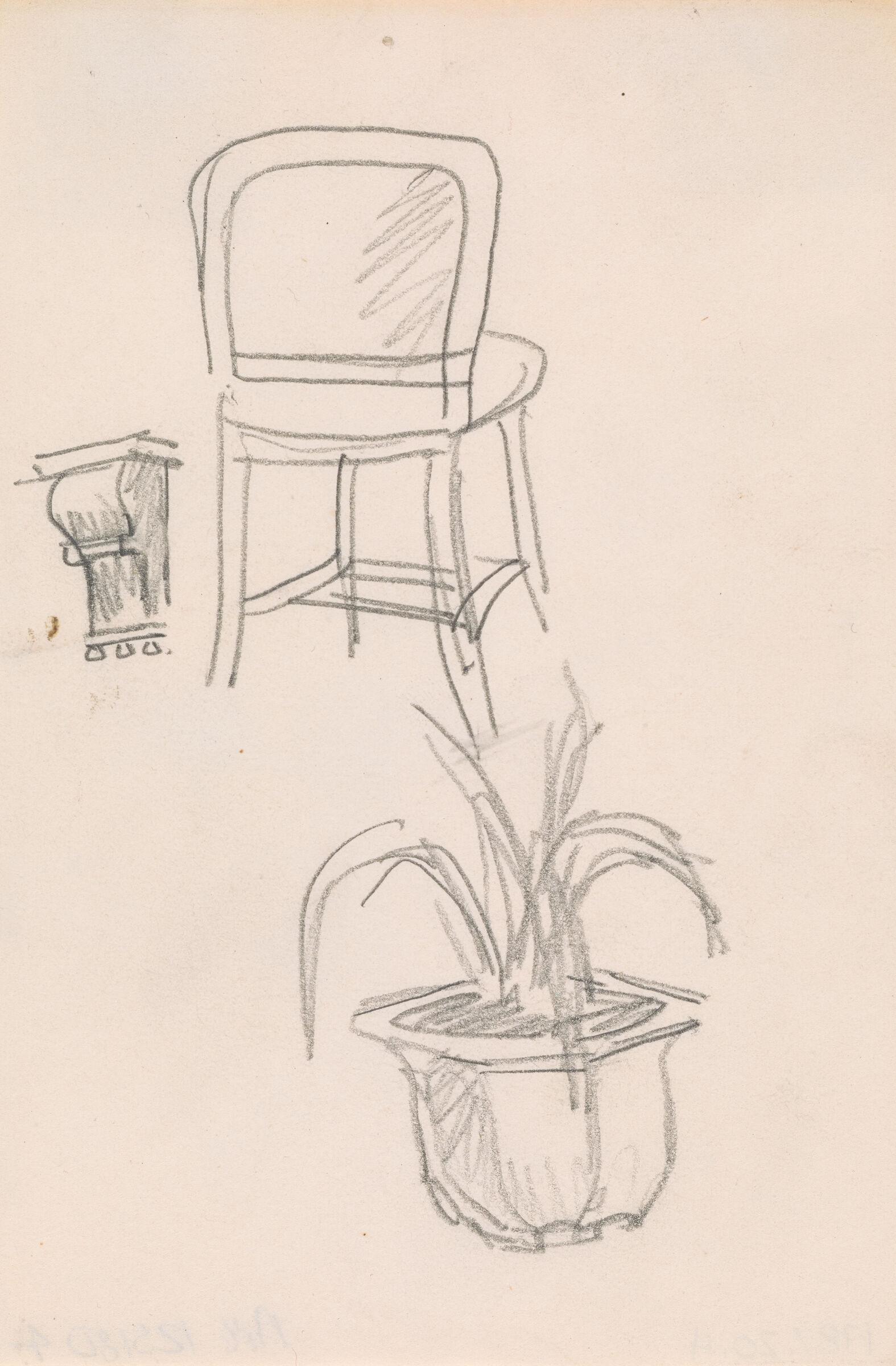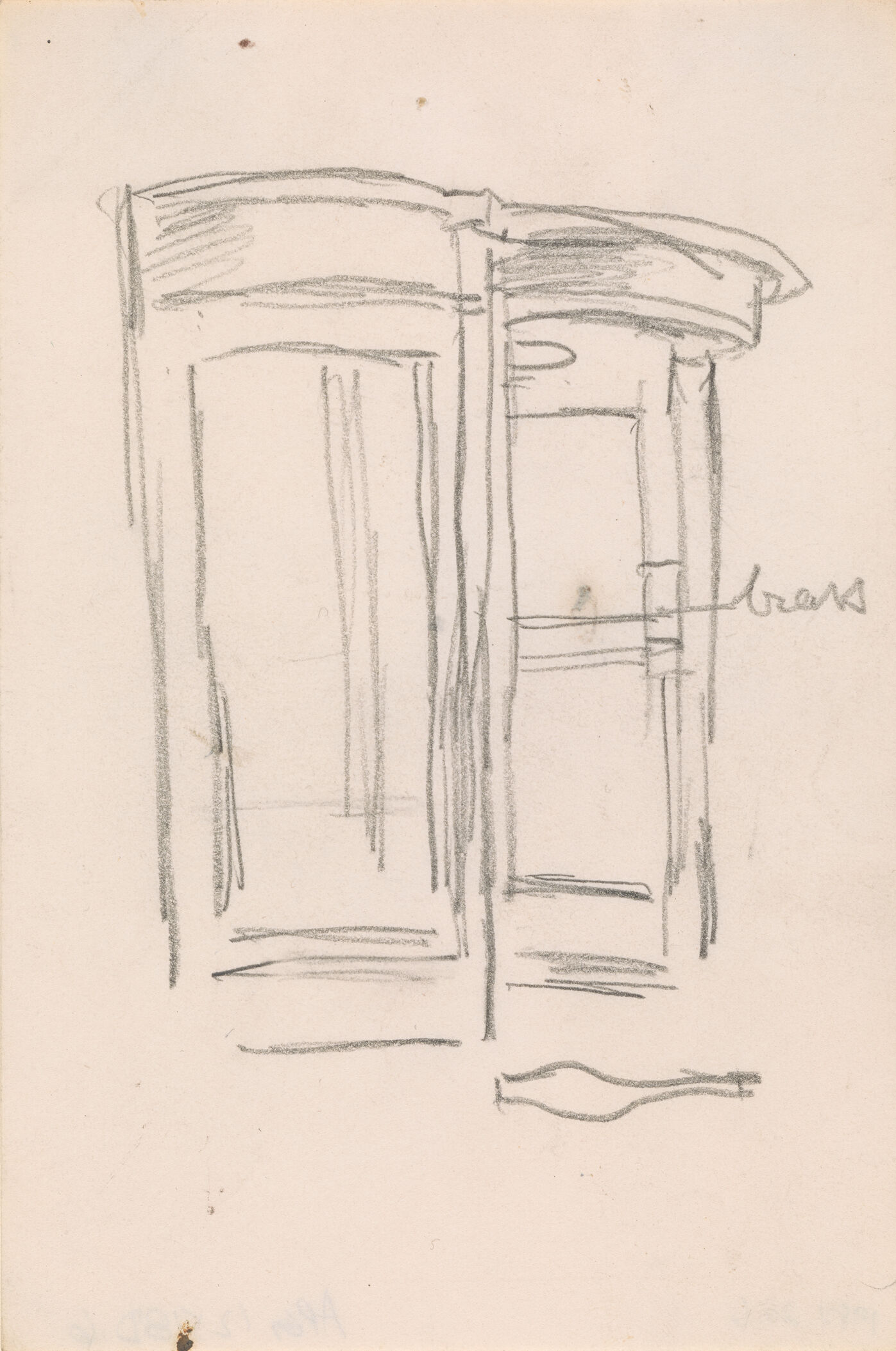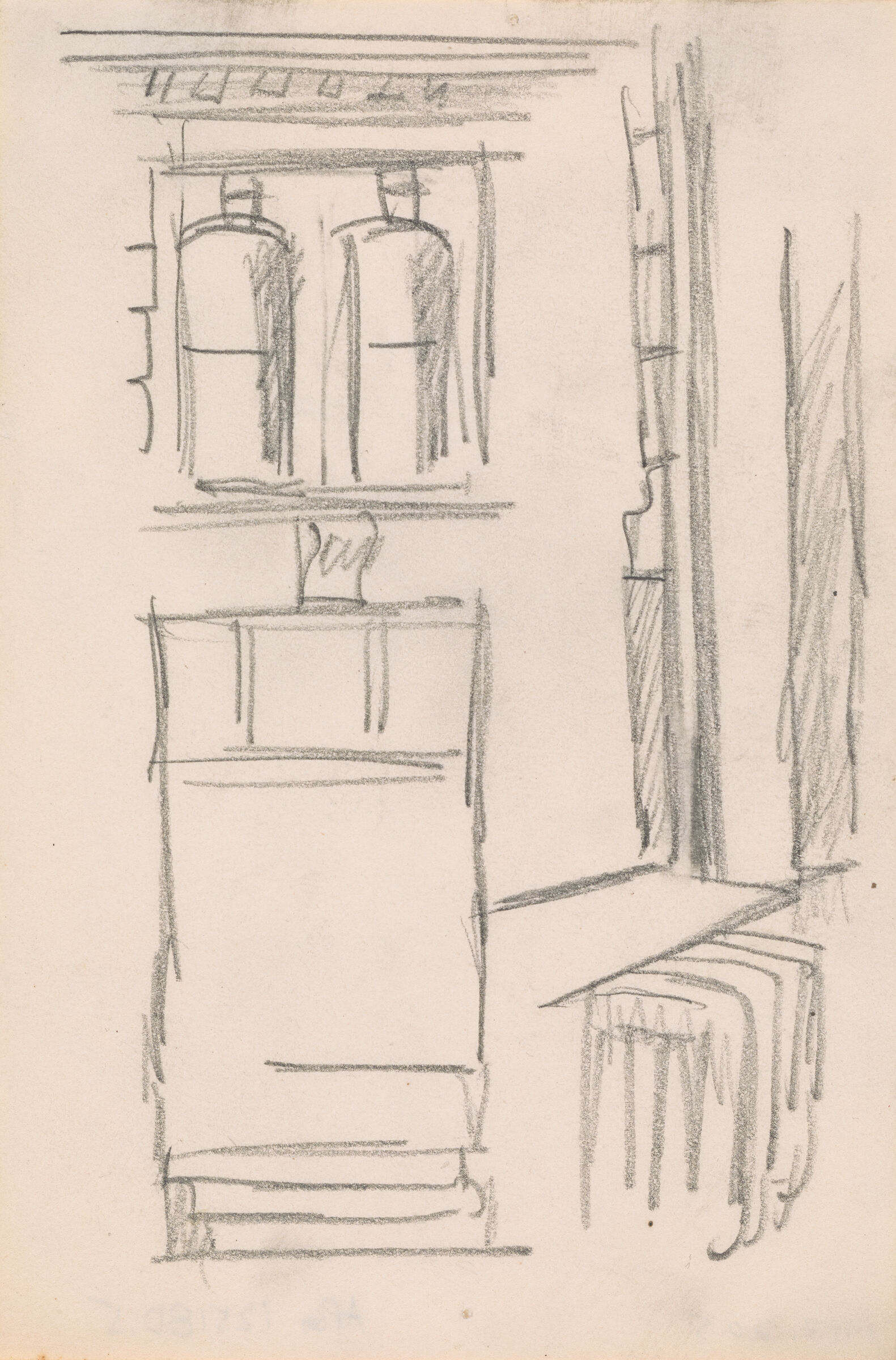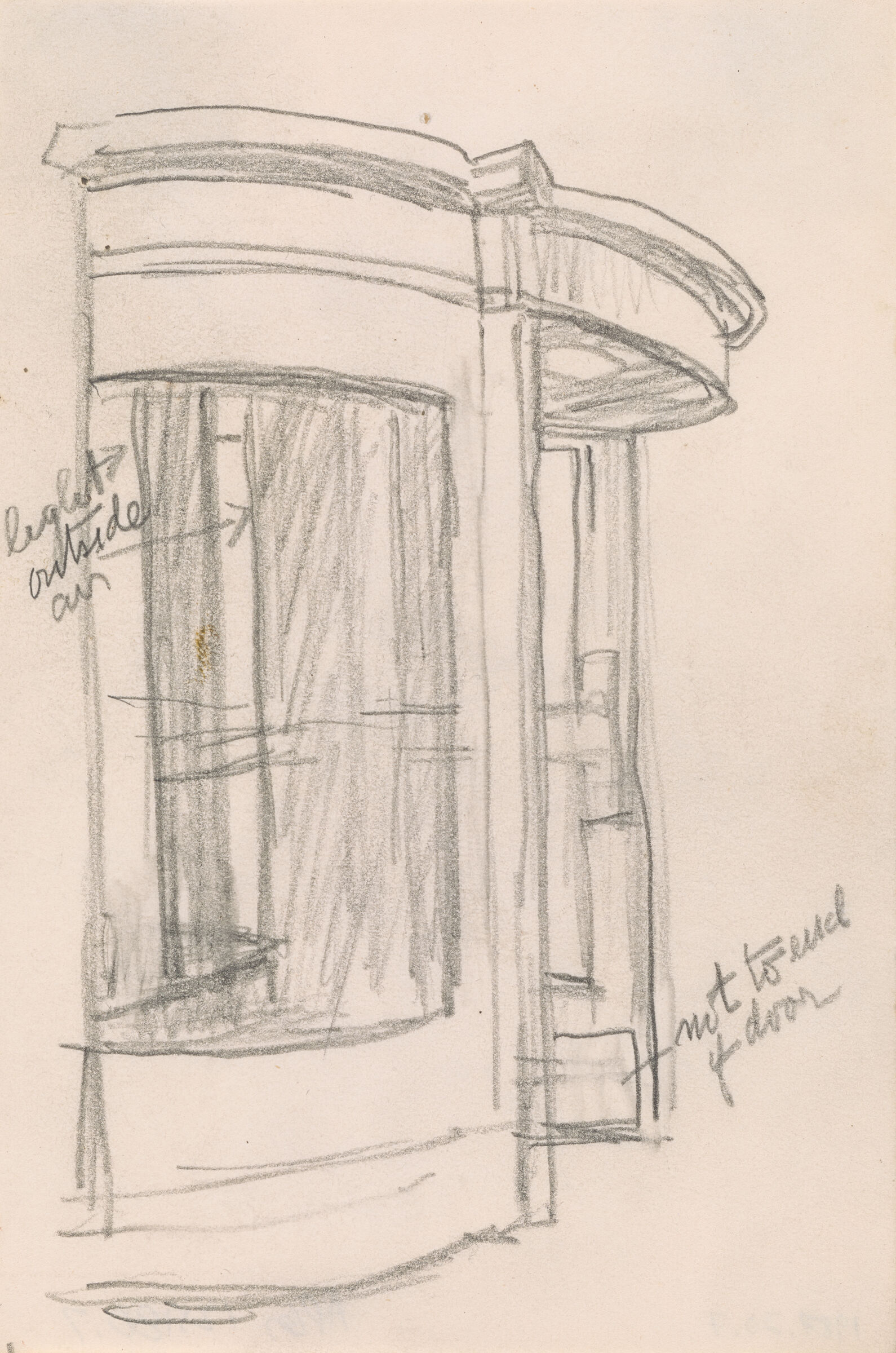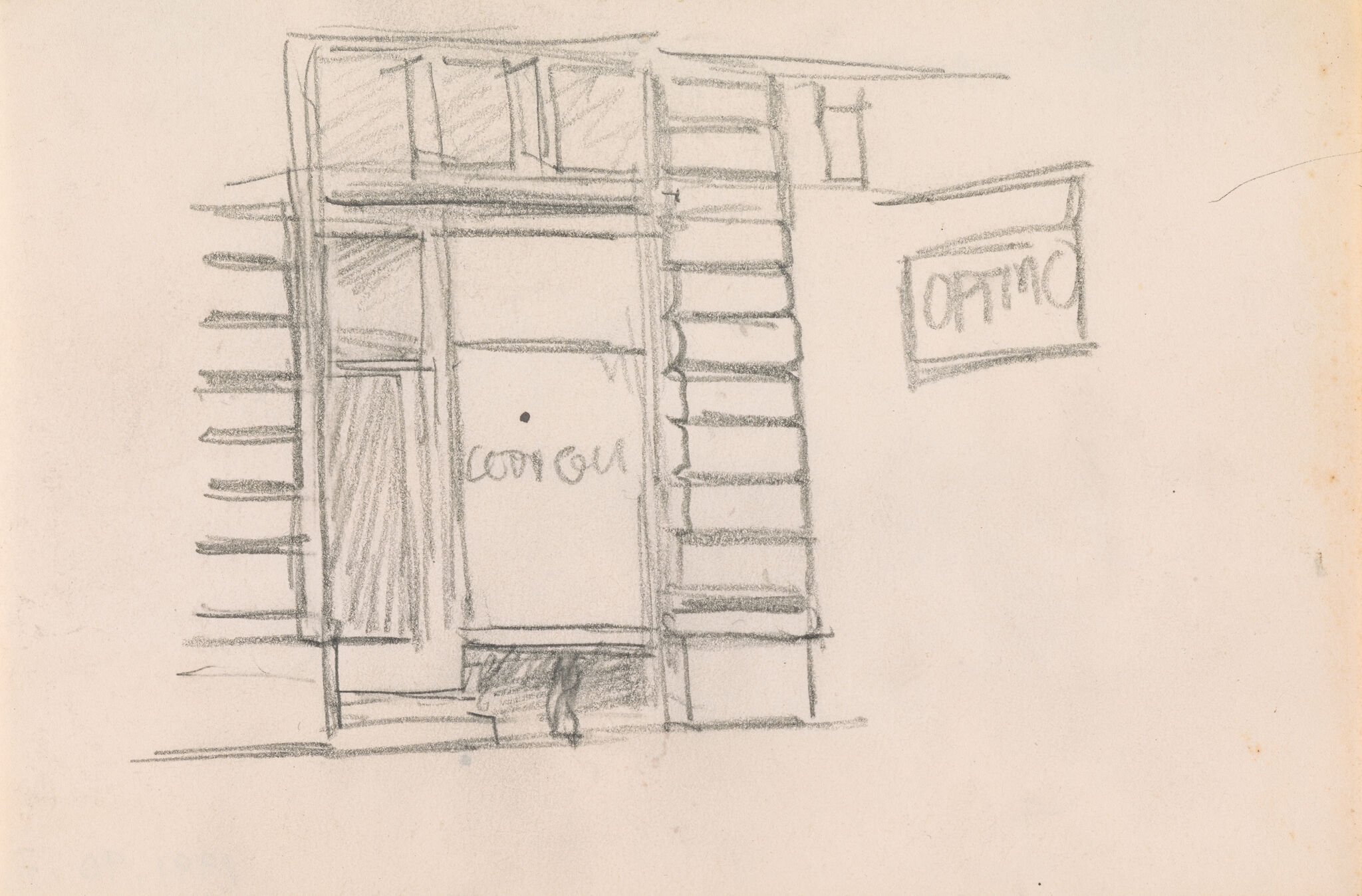Reality and Fantasy
“Originality does not reside in method, but is deeper seated in the personality and inner life of the artist.”
—Edward Hopper
From the mid-1940s to the 1960s, Hopper’s scenes inspired by New York City became more pared down and mysterious. Works depicting cafeterias, offices, and apartment bedrooms were a product of his personal experiences and imagination. His art developed from careful looking, “from the fact” as he described it, and a subjective process of improvising. Hopper admitted he often felt “torn between the two” and described that “more of me comes out when I improvise.”
The bareness of Hopper’s seemingly realistic yet enigmatic setting in Sunlight in a Cafeteria, the quality of light, and the two isolated figures create the artwork’s quietly dramatic mood. Hopper portrays an expansive view of the cafeteria, and another building’s façade through a large window, distancing the observer from the scene. By including details of things like the potted palm and revolving brass door from preliminary sketches, Hopper encouraged the viewer’s gaze to move throughout the vast space. Hopper argued, “I hate the word American Scene, hate the term…It has been applied to American painters who definitely tried very hard to be American, and I never did. I just tried to paint myself.”
Although Hopper made meticulous preliminary sketches that he sourced for the painting Sunlight in a Cafeteria, he continually strived to eliminate in his work “the disturbing intrusion of elements not part of my most interested vision.” Hopper described in his journal, “Notes on Painting,” that his aim was to create “a realistic art from which fantasy can grow.” By the 1950s, Hopper had generated a vast repertoire of drawn images inspired by many urban settings. He thoughtfully composed fully-rendered elements and edited unnecessary details in his paintings to express his own composite view of New York. As the artist concisely put it, “I’m thinking out my picture”. For Hopper, “Great art is the outward expression of an inner life in the artist, and this inner life will result in his personal vision of the world.”
Activities
How would you convey a particular feeling or mood through art?
Hopper’s imagery has been associated with solitude and urban isolation. Encourage students to come up with a list of different feelings or moods like joy, anger, surprise, fear, solitude, peacefulness, melancholy, etc. Ask them to choose one and create an artwork in the medium of their choice that evokes that feeling. They can decide to make a representational, symbolic, or abstract artwork. Have them reflect on how they communicated their selected feeling or mood.
How would you communicate the atmosphere of a place?
Hopper’s Study for Sunlight in A Cafeteria presents an ethereal environment with inscrutable personages. Encourage students to carefully look at all the details in the painting. Have them imagine they are one of the two figures in the artwork. Invite the students to imagine they are a food and restaurant critic and their job is to review the eatery. Ask them to take into account when writing their appraisals all they saw in the painting. Have students share their texts and the observable, and not visible, reasons for their reviews’ perspectives.
How can you change an object’s meaning with your artistic choices?
Hopper thoughtfully considered what elements to include and eliminate in his paintings. Invite students to study a two-dimensional artwork they previously made. Using tracing paper, or another means of copying, ask students to reproduce their artworks several times while experimenting with eliminating different elements. Have students discuss how their works perceptually changed with each artistic choice and how these decisions might have affected their art’s meaning.
How would you depict a place that conveys your inner self?
When asked why he painted, Hopper responded, “I’m after me”. He made introspective paintings of places like automats, cafeterias and restaurants. Hopper pondered, “Why I select certain subjects rather than others, I do not exactly know, unless it is that I believe them to be the best medium for a synthesis of my inner experience.” Ask students to think about and select a specific place or space that conveys their inner selves. Invite them to create their “self-portrait” places in the medium of their choice. Discuss with students what their places say about them.
Additional Resources
Whitney Museum: slideshow of works in the “Reality and Fantasy” gallery

